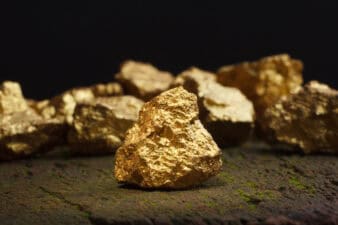Despite a stronger U.S. dollar and an increasingly positive outlook for the U.S. economy, I remain bullish on the prospects for gold. While I am certainly no advocate of “betting the house” on a rebound in gold prices, I believe every investor should have a portion of their portfolio invested in the precious metal.
This is because gold is one of the best and most widely recognized safe-haven assets and acts as an important hedge against uncertainty for investors in unpredictable and volatile times.
Let me explain why.
1. Global economic uncertainty continues to grow: The U.S. economy may be firing on all cylinders, but there are signs all is not well in the global economy. For October 2014 industrial activity in China fell for the fourth successive month, and there are growing fears its property and credit bubbles are set to burst. While the Eurozone may have dodged a triple-dip recession, it remains in a deep structural slump with declining economic activity in some of its largest economies including Germany, Italy, and France.
Each of these factors indicates the outlook for the global economy is increasingly uncertain, while macro-economic instability and volatility continues to grow.
2. Significant chance of a global recession in 2015: According to economist David Levy, there is a 65% chance of a global recession in 2015, despite signs of outstanding growth in the U.S. Levy believes the problems besetting the rest of the world economy will drag the U.S. down with emerging economies set to derail economic growth. This is because they are export-oriented economies that have invested in considerable export infrastructure to sell goods the West now longer has the means to buy.
3. Quantitative easing has failed: Recently former fed chairman Alan Greenspan claimed the Fed’s QE policy has failed, artificially inflating asset prices while delivering no tangible benefit to the real economy. This has set the stage for the next global recession with many non-productive assets in price bubbles while real economic activity continues to decline.
4. Central bank buying adds support: Despite Swiss voters recently rejecting a referendum to raise Swiss central bank gold holdings to a minimum of 20% of its forex reserves, central bank buying continues unabated. One of the biggest buyers is Russia, which since the end of September 2014 has bought 35 tonnes of gold, bringing its total purchases for 2014 to 150 tonnes. This can be attributed to Russia seeking to hedge its reserves and prop up the price of the ruble. I expect this strong buying to continue with Putin seeking to diversify from currencies he views as being under American control.
Since 2010, central banks have become net buyers of gold and this is expected to continue for as long the outlook for the global economy remains so uncertain. This continues to create floor for gold prices and increased demand from central banks will certainly act as a tailwind to drive gold prices higher.
5. Wall Street has bet big on gold: Institutional investors continue to bet big on gold. George Soros has made forays into Barrick Gold Corp., Goldcorp Inc. (TSX: G)(NYSE: GG) and Agnico Eagle Mining Ltd. But other Wall Street investors have also bet big on gold, with hedge fund manager Ray Dalio adding to his holdings in gold miners Goldcorp and Barrick, now having invested almost US$20 million in each. While another hedge fund manager, Donald Smith made a big bet on beaten down gold miner Kinross Gold Corp., investing US$17 million during the third quarter.
Growing economic uncertainty and the failure of QE, exposure to gold is an important hedge against uncertainty. I believe the best way to do this is obtaining leveraged exposure through the gold miners, with Goldcorp offering the most certainty because of its solid balance sheet, diminishing costs and high quality asset base.







